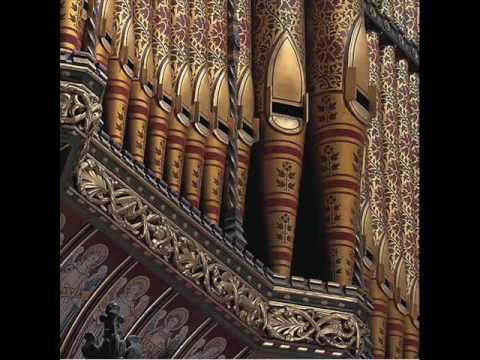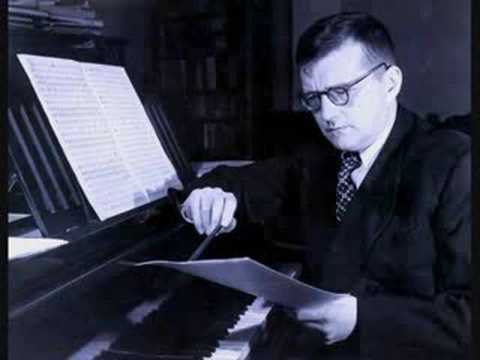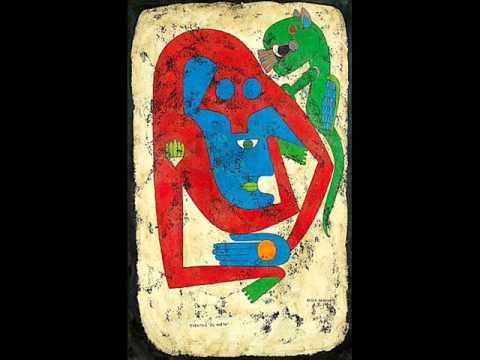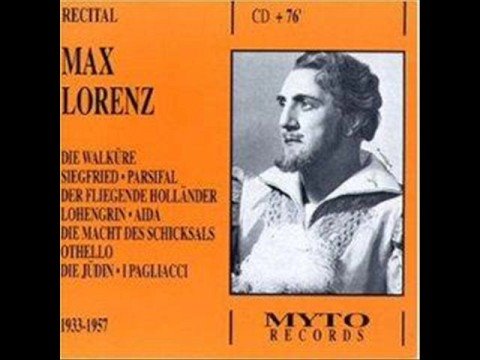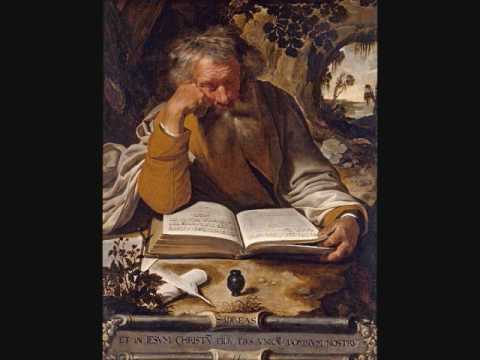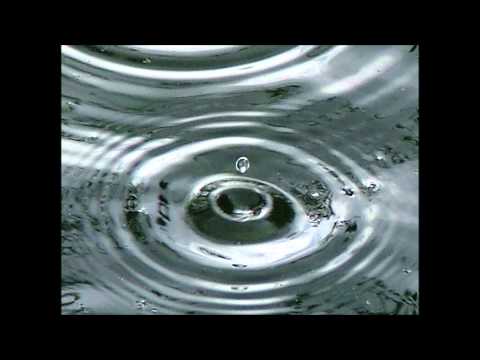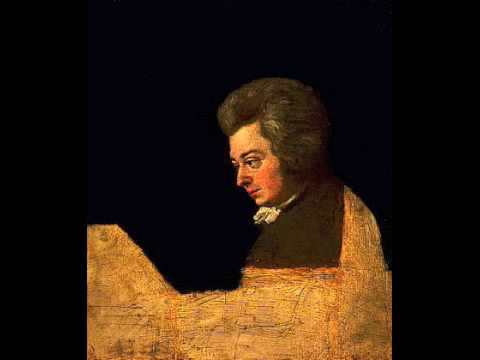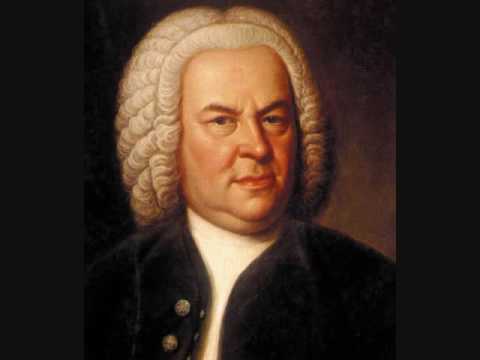Yes, as a matter of fact, Pachelbel wrote more than one Canon in D Major. He wrote over two hundred pieces for the organ, his instrument, and hundreds of pieces for all other instrumentation and voices. He was one of Bach’s major idols, and Bach studied his works voraciously. Consequently, a lot of Bach’s fugues sound similar in construction and methods. This fugue is the lister’s favorite of those that YouTube has to offer, but he could find no opus number for it, and Pachelbel is sure to have written dozens of fugues over the years in C Major, as well as all the other keys. This is a light, fun one, with repeated notes in the melody.
Shostakovich was a close student of Bach’s work, as any self-respecting musician of any kind of music ought to be (heavy metal musicians routinely praise Bach), and as such, this fugue bears a few striking similarities to the high Baroque style. The theme is deceptively simple but promises many elaborations, and the whole piece is superbly logical, with a steady build in polyphonic complexity. Yet, the “mood” of the piece, for lack of a better word, places it squarely in the late Romantic era, being distant, slightly sad, perhaps a little expressive of the Russian countryside in a bleak rain.
As is the case of all music, but especially post-Romantic, 20th Century music, describing this one is almost impossible. The entire piece, in four movements, is written without key signature, but, while it is strictly atonal, the strictness of its adherence to the Baroque traditions of a fugue make it intensely arresting, and not difficult to follow. If you were to describe an impression the music gives you, you might say it sounds like some hideous monster sneaking up on you slowly, ever patiently, until about two-thirds of the way through, you, the audience, turn and see the monster, and have to decide what to do next. In the end, you cautiously back away from it. Of course, that’s only this lister’s impression. Its almost unbearable intensity, however, cannot be ignored.
As is typical of Wagner’s operas, he employed all the polyphonic music he could manage, in order to add layer on layer of complexity to the titanic music that his epic stories required. The end of Act 1 of Lohengrin is another fine example of his grandiose, Romantic polyphony. But he outdid himself with Die Meistersinger. In scene 6 of Act 2, Beckmesser, a mastersinger, attempts to serenade Eva at her window, but is interrupted by Hans Sachs, another mastersinger, who strikes the soles of a pair of shoes with a hammer each time Beckmesser makes a mistake. By the time Beckmesser finishes his song (to Magdalena, disguised as Eva), Sachs has finished repairing the shoes. Their ruckus wakes up David, who jealously attacks Beckmesser, which wakes up the entire neighborhood and nearly starts a riot. All this chaos on stage is held together magnificently by the fugue Wagner has the characters sing and the orchestra play.
One of Mozart’s finest efforts, and an obvious show of skill in composing complex polyphonic music. This movement is a double fugue, combining both the Kyrie Eleison and the Christe Eleison into one piece of music. These two texts have almost always been separate, because the Greek/Latin text reads, “Kyrie elision. Christe elision. Kyrie elision.” The tones of these texts are popularly interpreted as “foreboding/scary” for the Kyrie and “plaintive” for the Christe. The idea is that the Kyrie invokes God the Father, who will destroy all sinners in the last days, while the Christe invokes Christ, who pleads for all sinners to convert. Mozart’s version is, more or less, no exception. The movement begins with a strong statement from the bass voices, “Lord, have mercy!” immediately answered by the altos, “Christ, have mercy!” in a desperately rising staccato, as if time is short. The fugue is not particularly long, but it demonstrates a mastery of the polyphonic techniques in which you must be fluent in order to maintain the theme and development in a fugue. Double fugues are much more difficult to compose than single fugues, and because Bach wrote several, the most notable of which are in his monumental Art of the Fugue, many later composers have felt the pressure to prove themselves. Verdi practically failed, writing a technically accurate, but very academic double fugue for the Sanctus of his Requiem. Mozart, however, is able to toy with the intricacies, which is necessary for the proper exploration of the subjects.
Buxtehude was Bach’s most direct idol. He found in Buxtehude’s work that divine complexity Baroque music always sought, and finally found in Bach. If Bach can be said to be the culmination, the pinnacle, of the Baroque, then Buxtehude laid most of the foundation for Bach’s pedestal. As such, Buxtehude’s music is not nearly as heavy or robust as Bach’s, but this fugue, especially, possesses a cheery lightness that he elaborates into a rainbow of polyphonic textures and colors, and it was perfectly suited to his intent: a refreshing break from a monotonous sermon during a four-hour church service. It is not very long, compared to many others on this list, but Buxtedhude got in, said all he needed to say, and got out. A slender, fair-haired dance of a fugue.
This list would be grossly incomplete without mentioning Handel. He was Bach’s greatest contemporary, and Beethoven and Haydn both considered him the greatest composer of all time (they only had a fraction of Bach’s manuscripts at their disposal in their times). Handel’s most famous work, the titanic oratorio, Messiah, ends with a suitably titanic fugue on the single word, “Amen.” Handel was the second greatest master of the Baroque fugue, and that’s especially impressive since fugues were a central theme of Baroque music, more so than of Classical or Romantic music. He was by far more well known throughout Europe than Bach, and very wealthy, as he was employed by King George II of England. Bach had no such luck, being employed exclusively by churches, which could barely afford everything besides music. Bach’s income was supplemented by trusses of firewood and bags of corn. He couldn’t even raise the money to take a solo trip to England to meet his greatest contemporary. Handel’s “Amen” has to wrap up “the greatest story ever told,” as it were, and to this end, he scores the entrance of the trumpets for a marvelous, bombastic fanfare, a final storming of Heaven, as some have said. The complexity of the fugue is on par with some by Bach, leading some musicologists to argue that the “Amen” chorus is an even higher achievement than the “Hallelujah” Chorus.
Beethoven loathed writing counterpoint. Contrapuntal music did not come naturally to him, but given his never-give-up attitude toward just about everything, he refused to yield to the fugue’s enormous technical difficulties. After an arduous career of writing a lot of human history’s almightiest music, along with a number of fugues and fugal sections to larger works, he cemented his place among the finest contrapuntal composers with his fugal finale to this sonata. It is notoriously difficult for many classical pianists because it so huge a movement, with three voices in triple meter, lasting 12 solid minutes. It is no easy feat to memorize it. The whole sonata was, for most of the 1800s, the longest solo piano work. Three voices, not four, comprise the fugue, on a theme concerned with the exploration of dissonance, a very modern, even heretical, idea at the time. Beethoven, though, was never one to be afraid of what people thought of his work. Like most of Beethoven’s piano work, this one employs extensive trilling. Sviatoslav Richter likened its composition to Noah’s construction of the Ark: there was only one man on Earth who could build the Ark. And God called him to do it. It begins simply, methodically laying a foundation, then reflecting on how to proceed, before finally hitting on the idea of raising the rounded walls of the ship.
Mozart wrote this entire symphony in about a month, in the summer of 1788, at the same time as he worked on Symphonies 39 and 40, his last three, along with dozens of other large and small works. The last movement is classic Mozart, cheerful, ebullient, full of laughter and euphoria. This lister thinks he might have cheated a bit in including it, because in the strict sense of the other entries, this one is “fugato,” not a fugue. A fugato piece is written in the style of a fugue but makes so many moderations here and there it becomes too loose a piece to be a fugue. Usually, it turns into multiple fugues, one after another, rapid-fire, with a lot of intertwining. That is what Mozart does with the four-note theme of this one. It can be said to have five voices, each of which alters the theme in a different way, and each of these mariations is treated throughout the orchestra to its own development, until the coda brings all five voices together for a big finish. It is supremely scientific, but you have to study it on paper to get the full effect of what Mozart achieved.
Beethoven was, at the time of this composition’s public debut, still not universally accepted as a titan of contrapuntal music. Today, we know better. His “grand fugue,” originally published as the final movement of his gigantic String Quartet, Op. 130 in B-flat Major, was not as well received as he would have liked, because no one understood it. He based the theme on dissonance, like #3, which to the mainstream was still a very new and strange concept at the time. But he wrote it like he heard it in his head, and was never afraid to try anything. If it sounded good, he kept working with it. He withdrew it from the quartet and substituted a movement easier to get along with, but published the fugue by itself. It was debuted by the Schuppanzigh Quartet, led by Ignaz Schuppanzigh himself, one of the finest violinists ever. Afterward, Schuppanzigh mentioned to another member of the quartet that he did not have the slightest understanding of the fugue, but didn’t dare question “the Generalissimo.” It is a double fugue, with four voices developing two subjects simultaneously. Beethoven, like Mozart, Haydn, et al., had a number of Bach’s fugal works to draw from, but painfully few. He studied the fugue primarily from Bach’s Well-Tempered Clavier. It is especially impressive that Beethoven was able to take the next leap from the Baroque, since the best, most thorough treatise on fugal composition, Bach’s “The Art of the Fugue,” was unknown to anyone until Felix Mendelssohn rediscovered it in 1829.
If you ever take a class in music appreciation or music history, you will study or at least learn an overview of the fugue, its history, its most famous composers, and at least an elementary comprehension of how one is written, and every single music book on the subject will use Bach’s “little” fugue in g minor. It is so nicknamed because he wrote a fugue about twice as long, BWV 542, also in g minor, which is equally legendary. The little fugue is, and likely will ever remain, the most concise, technically and musically expert fugue of human history. This does not deem it necessarily Bach’s best, which would be an impossible decision. But all fugal composition after Bach refers, whether deliberately or not, to the techniques that culminated in him, and this fugue is the most clear-cut, straightforward example of them.
